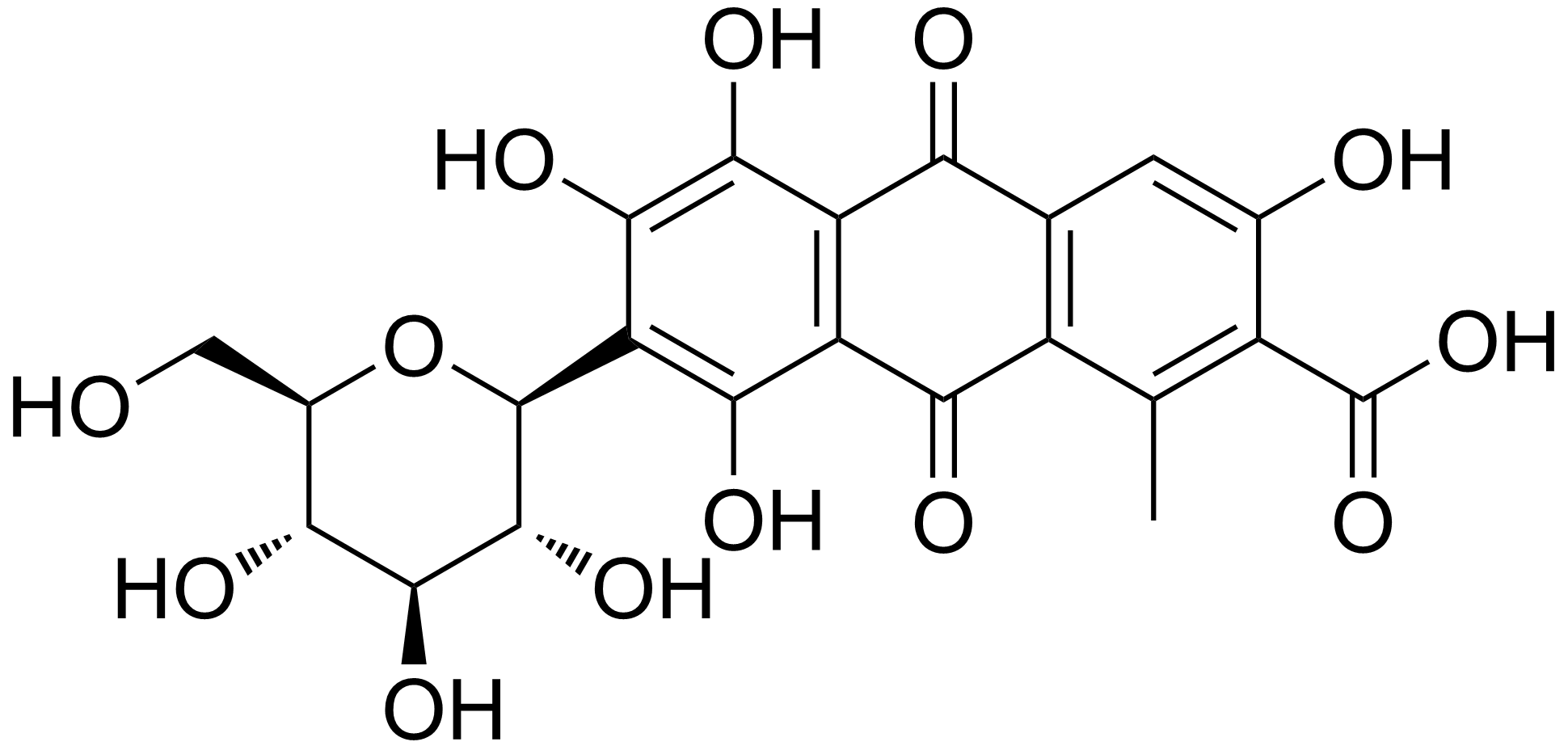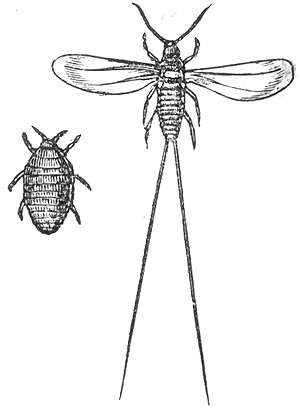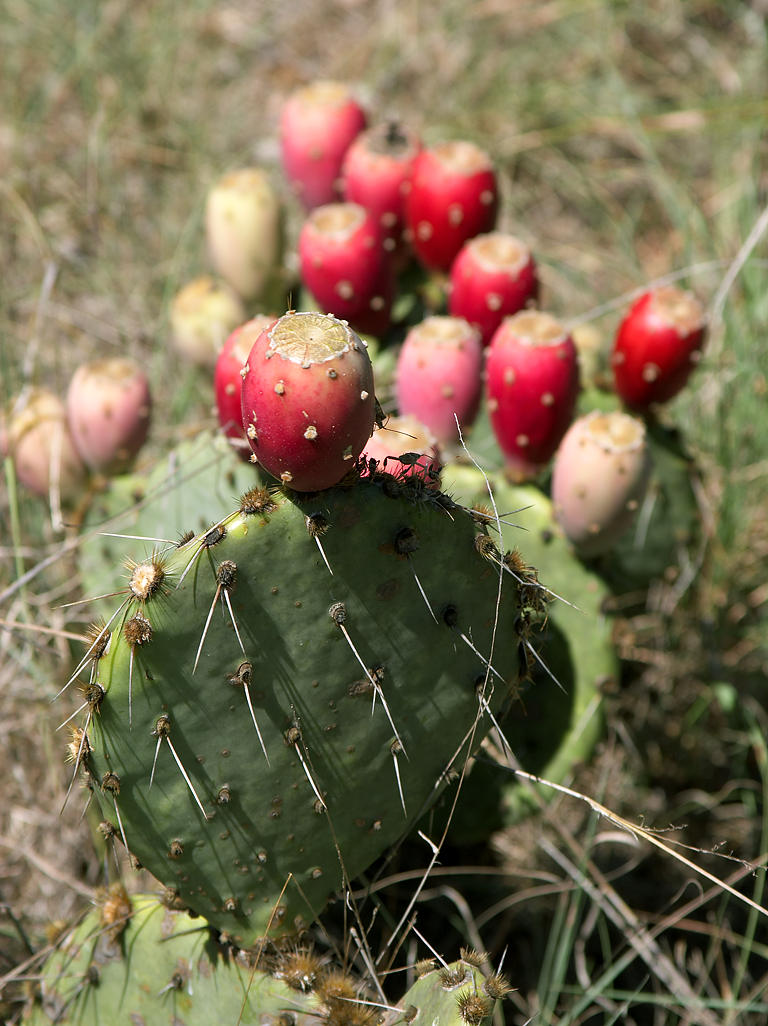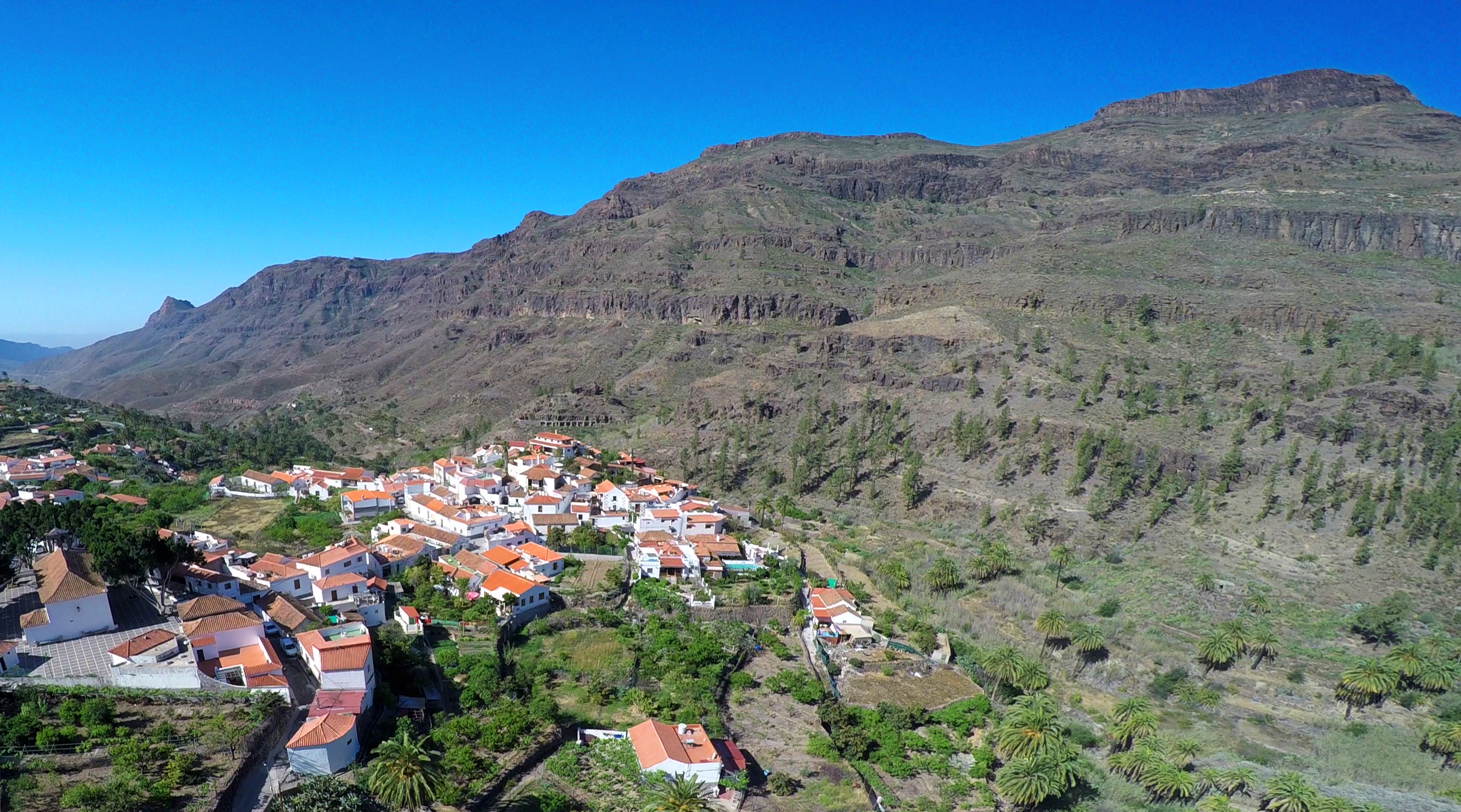|
Cochineal
The cochineal ( , ; ''Dactylopius coccus'') is a scale insect in the suborder Sternorrhyncha, from which the natural dye carmine is derived. A primarily sessility (motility), sessile parasitism, parasite native to tropical and subtropical South America through North America (Mexico and the Southwest United States), this insect lives on Cactus, cacti in the genus ''Opuntia'', feeding on plant moisture and nutrients. The insects are found on the pads of prickly pear cacti, collected by brushing them off the plants, and dried. The insect produces carminic acid that deters predation by other insects. Carminic acid, typically 17–24% of dried insects' weight, can be extracted from the body and eggs, then mixed with aluminium or calcium salts to make carmine dye, also known as cochineal. Today, carmine is primarily used as a Food coloring, colorant in food and in lipstick (Carmine, E120 or Carminic acid, Natural Red 4). Carmine dye was used in the Americas for coloring fabrics and ... [...More Info...] [...Related Items...] OR: [Wikipedia] [Google] [Baidu] |
Polish Cochineal
Polish cochineal (''Porphyrophora polonica, Margarodes polonicus''), also known as Polish carmine scales (), is a scale insect formerly used to produce a crimson dye of the same name, colloquially known as "Saint John's blood". The larvae of ''P. polonica'' are Sessility (zoology), sessile parasites living on the roots of various Herbaceous, herbs – especially those of the perennial knawel () – growing on the sandy soils of Central Europe and other parts of Eurasia. Before the development of Aniline#History, aniline, alizarin, and other synthetic dyes, the insect was of great economic importance, although in the 16th century, its use was in decline after the introduction of cheaper dyes imported from the Americas during the period of great discoveries of the New World by the Spanish and Portuguese explorers and conquistadores. In Europe before the 16 th century, the dye extract from Polish cochineal was one of the main Poland’s export products in antiquity and the Middle ... [...More Info...] [...Related Items...] OR: [Wikipedia] [Google] [Baidu] |
Armenian Cochineal
The Armenian cochineal (''Porphyrophora hamelii''), also known as the Ararat cochineal or Ararat scale, is a scale insect indigenous to the Ararat plain and Aras (Araks) River valley in the Armenian Highlands, including East of Turkey. It was formerly used to produce an eponymous crimson carmine dyestuff known in Armenia as ''vordan karmir'' (, literally "worm's red") and historically in Persia as ''kirmiz''. Vedeler, citing Cardon (2007), notes that "the Persian name ''Kirmiz'' originally referred to the Armenian carmine, a parasitic insect living on Gramineae grass, but the same name was also used by Arab geographers for insects living on oak trees in Maghreb and Al-Andalus, probably referring to '' Kermes vermilio''", although " is ... not clear whether the 'Kirmiz' dyestuff mentioned in early Arab texts always refers to the use of the insect ''Kermes Vermilio''." English translation by Caroline Higgitt of Cardon's French-language book ''Le monde des teintures nature ... [...More Info...] [...Related Items...] OR: [Wikipedia] [Google] [Baidu] |
Carmine
Carmine ()also called cochineal (when it is extracted from the Cochineal, cochineal insect), cochineal extract, crimson Lake pigment, lake, or carmine lake is a pigment of a bright-red color obtained from the aluminium coordination complex, complex derived from carminic acid. Specific code names for the pigment include natural red 4, Colour Index International, C.I. 75470, or E number, E120. ''Carmine'' is also a general term for a particularly carmine (color), deep-red color. Etymology The English word "carmine" is derived from the French word ''carmin'' (12th century), from Medieval Latin ''carminium'', from Persian language, Persian ''qirmiz'' ("crimson") and from Armenian language, Armenian կարմիր/carmir ("red"), which both derive from Middle Persian ''carmir'' ("red, crimson"). The Persian term ''carmir'' is likely cognate with Sanskrit ''krimiga'' ("insect-produced"), from ''krmi'' ("worm, insect"). The Persian word for "worm, insect" is ''kirm'', and in Iran ... [...More Info...] [...Related Items...] OR: [Wikipedia] [Google] [Baidu] |
Dactylopius
''Dactylopius'' is a genus of insect in the superfamily Coccoidea, the scale insects. It is the only genus in the family Dactylopiidae.Van Dam, A. R. and B. May. (2012)A new species of ''Dactylopius'' Costa (''Dactylopius gracilipilus'' sp. nov.) (Hemiptera: Coccoidea: Dactylopiidae) from the Chihuahuan Desert, Texas, U.S.A.''Zootaxa'' 3573: 33–39. These insects are known commonly as cochineals,Ramírez-Puebla, S. T., et al. (2010)Molecular phylogeny of the genus ''Dactylopius'' (Hemiptera: Dactylopiidae) and identification of the symbiotic bacteria. ''Environmental Entomology'' 39(4), 1178-83.Chávez-Moreno, C. K., et al. (2011)Distribution and habitat in Mexico of ''Dactylopius'' Costa (Hemiptera: Dactylopiidae) and their cacti hosts (Cactaceae: Opuntioideae).''Neotropical Entomology'' 40(1), 62-71. a name that also specifically refers to the best-known species, the cochineal (''Dactylopius coccus''). The cochineal is an insect of economic and historical importance as a main so ... [...More Info...] [...Related Items...] OR: [Wikipedia] [Google] [Baidu] |
Carminic Acid
Carminic acid (C22H20O13) is a red glucosidal hydroxyanthrapurin that occurs naturally in some scale insects, such as the cochineal, Armenian cochineal, and Polish cochineal. The insects produce the acid as a deterrent to predators. An aluminum salt of carminic acid is the coloring agent in carmine, a pigment. Natives of Peru had been producing cochineal dyes for textiles since at least 700 CE. Synonyms are C.I. 75470 and C.I. Natural Red 4. The chemical structure of carminic acid consists of a core anthraquinone structure linked to a glucose sugar unit. Carminic acid was first synthesized in the laboratory by organic chemists in 1991. In 2018, researchers genetically engineered the microbe '' Aspergillus nidulans'' to produce carminic acid. It was previously thought that it contains α-D-glucopyranosyl residue, which was later redetermined to be the β-D-glucopyranosyl anomer. Harvesting from cochineals Carminic acid is commonly harvested from an American species scale ... [...More Info...] [...Related Items...] OR: [Wikipedia] [Google] [Baidu] |
Opuntia
''Opuntia'', commonly called the prickly pear cactus, is a genus of flowering plants in the cactus family Cactaceae, many known for their flavorful fruit and showy flowers. Cacti are native to the Americas, and are well adapted to arid climates; however, they are still vulnerable to alterations in precipitation and temperature driven by climate change. The plant has been introduced to parts of Australia, southern Europe, the Middle East, and northern Africa. ''Prickly pear'' alone is more commonly used to refer exclusively to the fruit, but may also be used for the plant itself; in addition, other names given to the plant and its specific parts include ''tuna'' (fruit), ''sabra'', ''sabbar'', '' nopal'' (pads, plural ''nopales'') from the Nahuatl word , nostle (fruit) from the Nahuatl word , and paddle cactus. The genus is named for the Ancient Greek city of Opus. The fruit and leaves are edible. The most common culinary species is the "Barbary fig" ('' Opuntia ficus-indica ... [...More Info...] [...Related Items...] OR: [Wikipedia] [Google] [Baidu] |
Scale Insect
Scale insects are small insects of the Order (biology), order Hemiptera, suborder Sternorrhyncha. Of dramatically variable appearance and extreme sexual dimorphism, they comprise the infraorder Coccomorpha which is considered a more convenient grouping than the superfamily Coccoidea due to taxonomic uncertainties. Adult females typically have soft bodies and no limbs, and are concealed underneath domed scales, extruding quantities of wax for protection. Some species are hermaphroditic, with a combined ovotestis instead of separate ovaries and testes. Males, in the species where they occur, have legs and sometimes wings, and resemble small flies. Scale insects are herbivores, piercing plant tissues with their mouthparts and remaining in one place, feeding on sap. The excess fluid they imbibe is secreted as Honeydew (secretion), honeydew on which sooty mold tends to grow. The insects often have a Mutualism (biology), mutualistic relationship with ants, which feed on the honeydew and ... [...More Info...] [...Related Items...] OR: [Wikipedia] [Google] [Baidu] |
Sessility (motility)
Sessility is the biological property of an animal describing its lack of a means of self-locomotion. Sessile animals for which natural ''motility'' is absent are normally immobile. This is distinct from the botanical concept of sessility, which refers to an organism or biological structure attached directly by its base without a stalk. Sessile animals can move via external forces (such as water currents), but are usually permanently attached to something. Organisms such as corals lay down their own substrate from which they grow. Other organisms grow from a solid object, such as a rock, a dead tree trunk, or a human-made object such as a buoy or ship's hull. Mobility Sessile animals typically have a motile phase in their development. Sponges have a motile larval stage and become sessile at maturity. Conversely, many jellyfish develop as sessile polyps early in their life cycle. In the case of the cochineal, it is in the nymph stage (also called the crawler stage) that the ... [...More Info...] [...Related Items...] OR: [Wikipedia] [Google] [Baidu] |
Canary Islands
The Canary Islands (; ) or Canaries are an archipelago in the Atlantic Ocean and the southernmost Autonomous communities of Spain, Autonomous Community of Spain. They are located in the northwest of Africa, with the closest point to the continent being 100 kilometres (62 miles) away. The islands have a population of 2.25 million people and are the most populous overseas Special member state territories and the European Union, special territory of the European Union. The seven main islands are from largest to smallest in area, Tenerife, Fuerteventura, Gran Canaria, Lanzarote, La Palma, La Gomera, and El Hierro. The only other populated island is Graciosa, Canary Islands, La Graciosa, which administratively is dependent on Lanzarote. The archipelago includes many smaller islands and islets, including Alegranza, Islote de Lobos, Isla de Lobos, Montaña Clara, Roque del Oeste, and Roque del Este. It includes a number of rocks, including Roque de Garachico, Garachico and Roques de ... [...More Info...] [...Related Items...] OR: [Wikipedia] [Google] [Baidu] |
Cactus
A cactus (: cacti, cactuses, or less commonly, cactus) is a member of the plant family Cactaceae (), a family of the order Caryophyllales comprising about 127 genera with some 1,750 known species. The word ''cactus'' derives, through Latin, from the Ancient Greek word (''káktos''), a name originally used by Theophrastus for a spiny plant whose identity is now not certain. Cacti occur in a wide range of shapes and sizes. They are native to the Americas, ranging from Patagonia in the south to parts of western Canada in the north, with the exception of ''Rhipsalis baccifera'', which is also found in Africa and Sri Lanka. Cacti are adapted to live in very dry environments, including the Atacama Desert, one of the driest places on Earth. Because of this, cacti show many adaptations to conserve water. For example, almost all cacti are succulents, meaning they have thickened, fleshy parts adapted to store water. Unlike many other succulents, the stem is the only part of most cacti ... [...More Info...] [...Related Items...] OR: [Wikipedia] [Google] [Baidu] |







